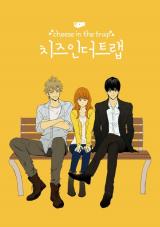Having returned to college after a year long break, Hong Sul, a hard-working over-achiever, inadvertently got on the wrong side of a suspiciously perfect senior named Yoo Jung. From then on, her life took a turn for the worse - and Sul was almost certain it was all Jung's doing. So why is he suddenly acting so friendly a year later?
Original Webtoon:
Naver + (Snowy Day Extra)
Naver Series
Official Translation:
English, Japanese, Thai, T.Chinese, Spanish,
(S.Chinese + Snowy Day Extra)
(Indonesian + Snowy Day Extra)
This webtoon has been adapted into a Korean Drama on January 4, 2016.
Digital
297 Chapters (Complete)
S1: 46 Ch. + Prologue + Special (1~46)
S2: 67 Ch. + 3 Specials + Extra (47~113)
S3: 108 Ch. + Prologue + 4 Specials + Extra (114~221)
S4: 76 Ch. + Special + Epilogue + Revision (222~297)
Print
34 Volumes (Complete)
S1: 6 Volumes
S2: 9 Volumes
S3: 12 Volumes
S4: 7 Volumes

Search for series of same genre(s)




